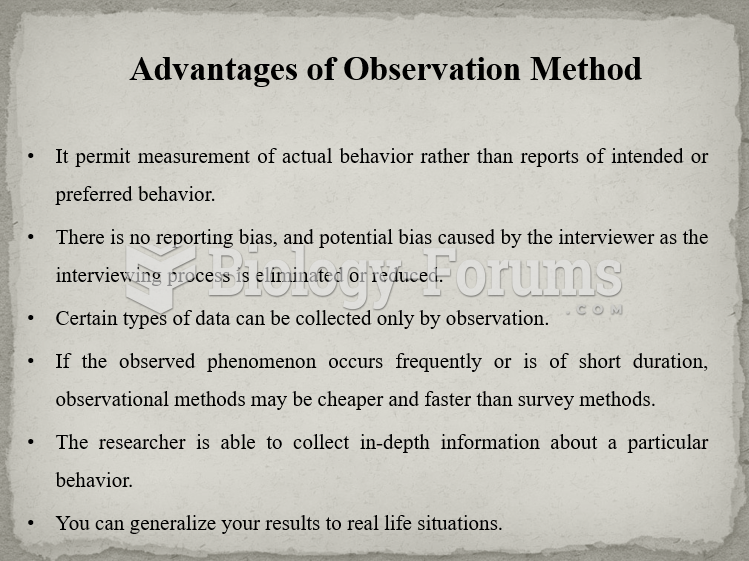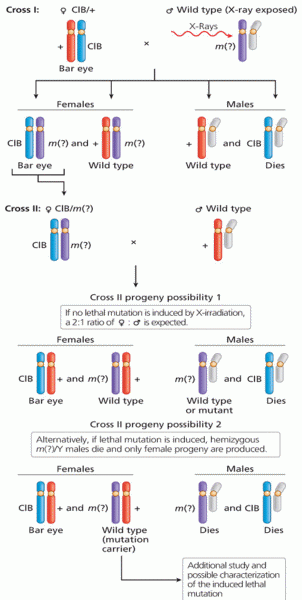Answer to Question 1
Responses should consider:
- The most common form of sexual research methodology is the survey.
- A survey is the process of collecting information from volunteer respondents.
- The purpose of a survey is to explain, describe, or compare people's knowledge, attitudes, beliefs, and behaviors.
- Large-scale surveys were first done by Kinsey in the 1940s.
- The written questionnaire offers the greatest anonymity and privacy for the respondent and may produce more honest responses.
- The face-to-face interview allows the interviewer to establish a friendly, trusting rapport with the participants, and to have more flexibility in asking planned and follow-up questions.
- This may lead to greater honesty in the answers.
- A telephone survey allows for anonymity and flexibility in questioning.
- In doing a telephone survey, one runs the risk that some people may not take telephone interviews seriously.
- They may also be annoyed at the intrusion into their lives. If so, the completeness or accuracy of their answers might be in doubt.
- The widespread use of cell phones can reduce the reliability and validity of the telephone survey method.
- Internet surveys offer the opportunity for a large number of responses from a wide geographical area in a relatively short time span.
- Internet surveys pose concerns about ethics and validity.
- For example, are Internet surveys truly confidential? Are the participants of legal age? Are they whom they claim to be with regard to age, gender, attitudes, and experiences?
- Does the Internet provide a non-representative, self-selected sample of participants?
- What about people who don't have computers or Internet access?
Answer to Question 2
Responses should consider:
- Protection from harm: researchers have to protect their subjects from all physical and psychological harm.
- This includes present and future harm.
- Informed consent: researchers must explain to potential participants what the study is about, what procedures will be used, and what, if any, possible risks are involved.
- They must assure participants that the records are to be kept confidential. If that's not possible, they should explain who will have access to the records and why.
- They should inform participants in sexual research if sensitive or potentially embarrassing topics will be part of the study.
- This allows the potential participants to make informed choices; if they agree to participate, this is called informed consent.
- If participants are minors, consent must be obtained from parents or guardians.
- Freedom to withdraw; participants have to understand that they have the freedom to withdraw their participation at any time.
- Some people might think that if they agreed to participate, they have to see it through to the end; this is not so.
- If participants receive payment, if they are made to feel that their completion of the study is required for payment, this may produce an unethical inducement to avoid withdrawing if they wish to do so. A possible solution is to pay participants at the beginning of each session just for showing up.
- Debriefing: this occurs after participants have completed their roles in the study.
- This is when researchers explain the goals and procedures of the study to participants.
- This gives participants the opportunity to ask questions or make comments about their experiences.
- If deception was employed in any way during the study, participants must be fully counseled about the form of the deception and why it was necessary. If so, participants should be assured that they were not foolish in any way to have been deceived.
- Debriefing allows researchers to determine if any lingering negative aftereffects from the study should be addressed with the participants.
- During debriefing, researchers may reassure participants of the confidentiality of the data and provide them with phone numbers of email addresses for further contact, if needed.
- Confidentiality: all results from research participants must be kept in complete confidence unless participants have given permission to share their data with other specific individuals.
- Findings must be reported in such a way that individual data cannot be identified.
- Researchers must develop methods of guarding against any possible breach of confidentiality before they begin to gather data.
- The widespread use of computer databases and electronic storage and transfer of information have created challenges for maintaining the confidentiality of research data.







